Teaching your dog to stay (4-step guide)
- Anja Boecker
- Updated: 2024-02-02
Imagine being able to safely sit your dog down on a busy street while you open the car door, or keeping him calm next to you as another dog walks by. More than just a basic skill, the Stay command is an indispensable tool for safety in everyday and emergency situations.
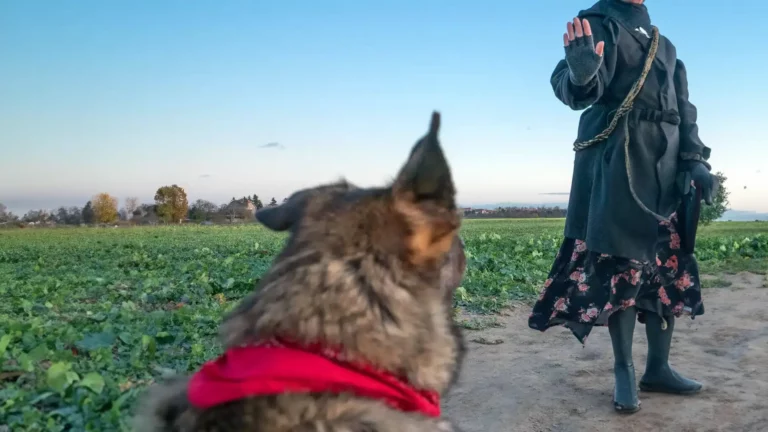
Why “Stay” Is So Important
See a friendly dog in the distance? Of course, your four-legged friend will want to greet him. He should sit and wait patiently until you give him permission to run away. As owners, we are often inconsistent with a simple "Sit! Sometimes we correct premature standing, sometimes we let our sweet darling get away with it because it's "just this once.
This is very confusing for your dog. Sometimes he is allowed to disengage from the command, and sometimes he is suddenly forbidden to do so. How is he supposed to know when he really needs to wait for your permission to stand up and when he doesn't? Let's face it: as the owner, you don't correct your dog every time he stands up.
Either you notice it too late, or "for once" you don't take it too seriously. With a "Stay!" you can spare your faithful companion the confusion. The stay command is much more deliberate. It will also be much more consistent - and easier for your dog to understand.
It is a versatile command. Your dog is running free and another dog or cyclist wants to pass? "Stay!" You have visitors and the front door is open to the street for a while? "Stay!" You're hiding his favorite toy for a game of fetch and you don't want him to follow you? "Stay!"
Safety and Security
The "Stay" command can protect your dog in dangerous situations by preventing him from running into the street or chasing after other hazards.
Control and Peace of Mind
It helps you stay calm and in control in difficult situations, whether at the vet, in a coffee shop, or when visitors arrive.
Build Trust
Successfully obeying the "Stay" command strengthens the trust and bond between you and your dog and promotes mutual respect.
Practical
Whether it's opening the front door without letting your dog run out or keeping your dog from running off the leash, Stay is useful in everyday life.
Social Interactions
A dog that has mastered "Stay" is often calmer and more relaxed when interacting with other people and animals.
Basics Before Training
Before you begin teaching your dog the "Stay" command, it is important to lay some groundwork. These fundamentals and attitudes are critical to successful training and will help you avoid frustration and achieve positive results.
Your dog should already know basic commands such as "sit" and "down" and be able to execute them safely. These are the foundation for more advanced commands such as "stay".
Work on increasing your dog's ability to focus. A dog that has learned to focus on you will learn faster and respond better to training.
Patience is important.
Every dog learns at his own pace, and it's important to be patient and celebrate progress, no matter how small. Be consistent with your commands and expectations. Conflicting signals can confuse your dog and make training more difficult.
Choose a quiet, distraction-free place to exercise, especially in the beginning. Schedule short but regular training sessions. Long training sessions can tire your dog and make learning less effective.
Find out what motivates your dog the most, whether it is his favorite treat, a toy, or praise. Vary the rewards to keep motivation high and avoid patterns where your dog only works for one reward.
Use positive reinforcement to encourage desired behavior. This helps create a positive learning experience and accelerates the learning process.
As always, negative training methods are taboo! Punishments create fear and mistrust.
4 Steps to a Safe “Stay”
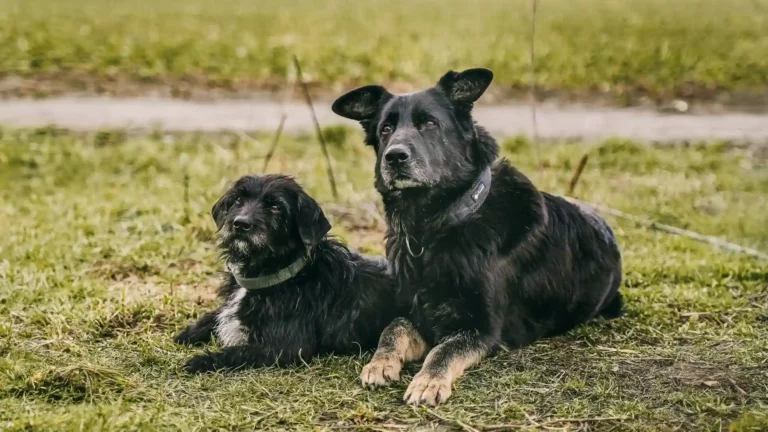
Before you begin training for a firm stay, your pet should already know "sit" and preferably "down". These commands are an excellent starting point for learning "stay".
1. Small First Steps
Begin training in a quiet environment. Your dog will be much more attentive if there are no exciting distractions around him. Then give him the sit command. When your dog is seated, hold out your hand - similar to a stop sign - and say "Stay". Continue with this hand signal.
Stand calmly in front of him and wait a moment. When your dog stands up, sit him back down and repeat the "stay" command. At the beginning of the training, a few seconds will be enough before you reward him.
2. Slowly Increase the Difficulty
Once your pet has successfully completed this exercise a few times, you can slowly increase the training. Increase the waiting time in small increments. But don't rush things so as not to overwhelm him. Your dog will learn much better if he has lots of small successes and enjoys practicing.
Now give him the command "Stay" and take a few steps away from him. Look in his direction first. When he stands up, walk back toward him and put him back down. Then repeat the exercise at a slightly shorter distance, taking even smaller steps. Eventually, the distance will increase.
3. Increase the Challenge
Now you can begin to turn your back to him as you move away from him. If this works well, repeat this exercise a few times. Your pet will feel unobserved, which may tempt him to get up or even follow you. If your dog leaves his position, correct him and train in small steps. For example, start by standing in front of him and slowly turn around.
Now give your furry friend the command "Stay!" and take a few steps away from him. Jump on the spot or run around him, throw him a toy, crouch, jog a few feet away, or dance. These movements are inviting to your dog. He may use them as a lure and run away.
To prevent this, you can also say "Stay" a few times during training while you are making these movements. The better your faithful friend handles the distraction, the less often you will have to repeat the command. When he stands up, correct him again and practice with slightly calmer movements. Adapt the pace of training to your dog.
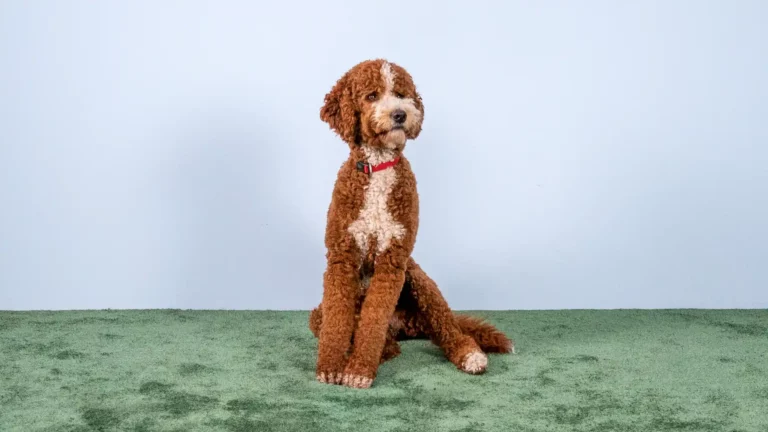
If all these exercises work well, you can make the training more difficult. Get your pet to stay where he is. For example, leave the room and rustle up a treat bag or rummage through a drawer. Leave the door open. If your dog follows you, bring him back and start over.
If the exercise works well, continue to close the door until you can close it completely. The goal is for your dog to obey the command even when unobserved and to wait patiently until you return and release the command.
4. Practice Everyday Situations
Once your dog has safely mastered all the steps in the house, you can introduce distractions that you might encounter in everyday life. Put your dog in the stay position and have a friend ring the doorbell. Your dog should stay in place while you let the person in, and only get up when you tell him to.
Now you can take the training outside. Give your dog the command "stay", for example in a field where children are playing in the distance or a strange dog is passing by. Stay with him in the beginning so you can correct him quickly. It is also a good idea to use a long leash in case he runs off unexpectedly.
If he continues to sit despite the distraction, you can begin to move further and further away from him. First with your face to him, then with your back to him. The external stimuli make it very difficult for your dog to concentrate. It is important to practice with small increments.
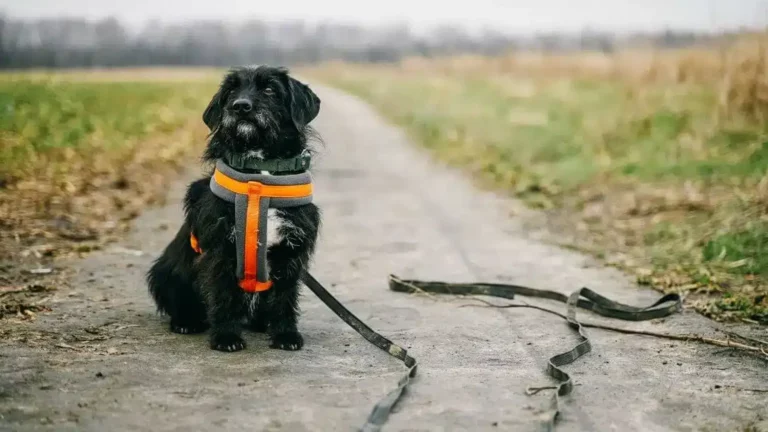
In the woods, you can train your dog to stay in place even when he can no longer see you. Just hide behind a tree for a short time and come back. Your furry friend should not move until you give the command.
Bicyclists are also great to include in your training. Instruct your dog to stay on the side of the road and let the cyclist pass. Of course, your companion should not jump up or run after the cyclist. You can do the same with walkers and riders.
Tips for Training in Different Environments
- Slowly increase the distraction: Start training in a quiet environment and gradually introduce distractions. This could mean moving from the living room to the backyard or a quiet park before moving to more crowded places.
- Controlled distractions: Practice with familiar distractions such as toys or other family members before introducing unfamiliar elements such as other dogs or loud noises.
- Various locations: Practice "staying" in different places inside and outside the home. Each new location has its own distractions and challenges. Change training locations regularly to get your dog used to staying in different places.
- Everyday situations: Practice scenarios that you might encounter in your daily life, such as waiting on the street, in a coffee shop, or when visitors arrive.
- Simulate emergency situations: Practice situations where you need to react quickly, such as when a door suddenly opens or you drop a lead.
- Same signals: Use the same verbal and nonverbal signals in each new environment to ensure consistency.
- Calm and confident demeanor: Remain calm and confident, even when the environment is stressful. Your dog will respond to your mood.
- Do not overtax him: Don't overwhelm your dog too early with scenarios that are too difficult. Increase the difficulty slowly and only move on if your dog remains reliable in the current situation.
- Positive reinforcement: Give your dog plenty of rewards in new and challenging environments to encourage reliability.
Dissolve the Command Properly
To ensure that your dog internalizes "Stay" as a command and does not end the exercise on its own, a release signal is important. To end the exercise, walk up to your dog and say "Okay" or "Finish" and praise him. Your dog is not allowed to leave his position and stand up or run away until you give this signal. This will keep you in control and will not confuse your dog as to when the exercise is over.
Is this too theoretical for you? If you prefer a visual approach, our app offers step-by-step video instructions to help you teach your dog to "Stay". Learn more about our app here.
6 Common Challenges & Their Solutions
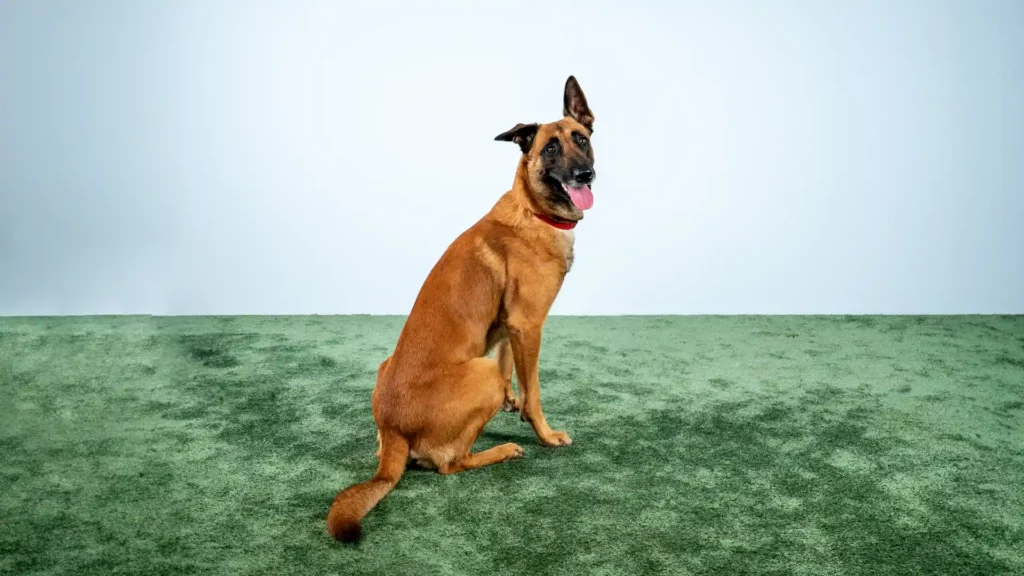
The level of difficulty is often increased too quickly. Distractions are difficult for your dog to resist. Many dogs also find it difficult to stay away from you. Be sure to tailor the training to your dog and repeat the exercises successfully several times before moving on to the next step.
If training sessions are too long, your pet will not be able to concentrate. It's best to train for only 5–10 minutes at a time and then give him a longer break. Several short training sessions a day will be most successful. It takes time for a confident "stay" to become ingrained in your dog's mind.
1. Your Dog Is Not Sitting Long Enough
- Problem: Your dog stands up too soon before you give the "Stay" command.
- Solution: Start with very short "stay" periods and slowly increase the duration. If the dog gets up too early, go back to the last successful phase and work from there.
2. Your Dog Is Distracted
- Problem: Your dog can calmly obey the "Stay" command, but if distracted, he will abandon the command.
- Solution: Practice staying in a quiet environment first. Gradually introduce mild distractions, increasing the intensity only when your dog successfully completes the current distraction.
3. Your Dog Follows You Instead of Staying With You
- Problem: Your dog gets up and follows you as soon as you walk away.
- Solution: In the beginning, practice walking away with only one step and coming back immediately to reward him. Gradually increase the distance and make sure the "stay" is reliable.
4. Your Dog Does Not Know What Is Expected of Him
- Problem: Your dog seems to be confused and doesn't understand what the command "Stay" means.
- Solution: Simplify training. Train in shorter, well-defined sessions and make sure the signals and rewards are clear and consistent.
5. Your Dog Loses Interest in Training
- Problem: Your dog shows disinterest or becomes tired during training.
- Solution: Keep training sessions short and interesting. Vary the exercises and use motivational rewards. Also, make sure your dog is rested and not overtired when you begin training.
6. Dog Only Responds to Rewards
- Problem: Your dog will only perform the command when a reward beckons.
- Solution: Gradually make the reward unpredictable. Not every "stay" will be rewarded with a treat, but praise and attention should always be present.
Remember:
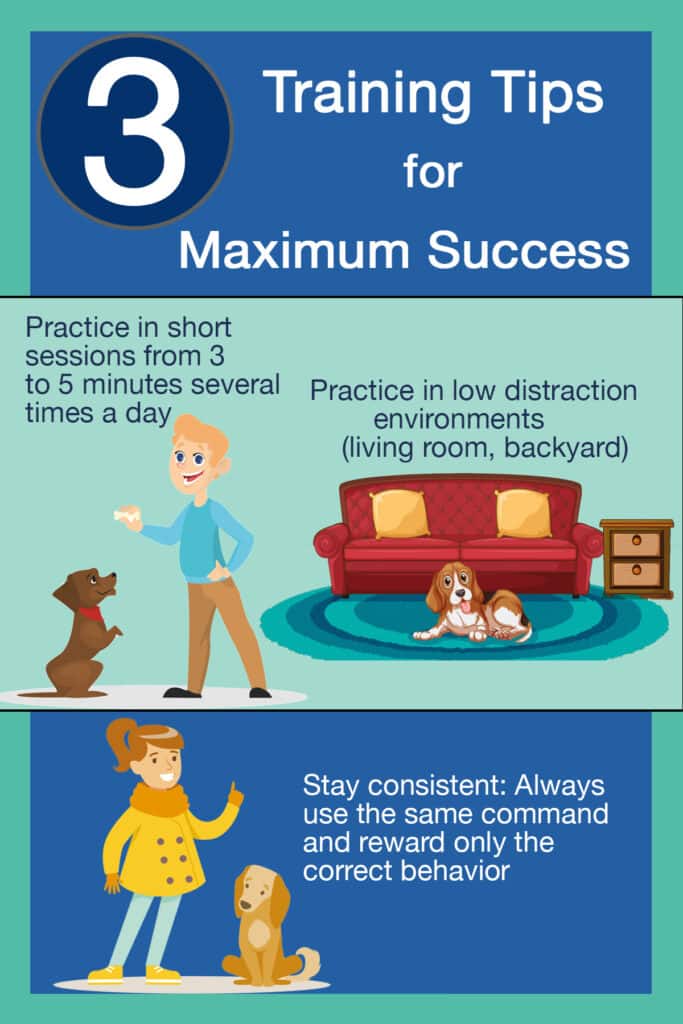
Take Care of Your Dog
When training the "Stay" command, it is important to consider not only learning success, but also the safety and well-being of your dog. Here are some important safety tips and precautions to keep your dog comfortable and healthy during training.
Choose a safe, quiet place to exercise, away from traffic and other hazards. Avoid exercising in extreme heat or cold. In warm weather, provide shade and fresh water.
Watch for signs of stress or discomfort, such as excessive panting, hesitation, or attempts to move away. Stop training if your dog shows signs of stress. Stop training before your dog gets tired or frustrated. Short, positive training sessions are more effective and enjoyable.
Make sure your dog is healthy and has no hidden medical conditions that could be aggravated by training. Adapt the training to your dog's age, health, and physical abilities. Older or sick dogs may need gentler and shorter training sessions.
Use positive reinforcement rather than punishment. Negative training methods cause stress and undermine your dog's confidence. Be encouraging and patient at all times. Every little bit of progress should be celebrated.
A regular training program will help your dog understand what is expected of him and promote a successful learning environment. Always use the same words and gestures for the "stay" command to avoid confusion and make learning easier.
Using Positive Reinforcement Correctly
Reward your dog immediately when he successfully responds to the "Stay" command. This will help him understand the connection between his behavior and the reward. Be consistent with your commands and rewards. Your dog should know exactly what is expected of him and when he will receive a reward.
Choose rewards that your dog really enjoys. These can be treats, praise, or playtime. The reward should be appropriate for the behavior. Alternate the types of rewards to keep your dog interested and avoid dependence on one type of reward.
Start by gradually reducing the frequency of the reward once your dog is reliably performing the command. Replace them with verbal praise or petting to achieve a lasting change in behavior.
Timing is everything: The timing of the reward is critical. Reward immediately after the desired behavior to make the best connection. Your dog should know that good behavior will always be rewarded. Unpredictability can lead to confusion and frustration.
Even if progress is slow, remain positive and patient. Your positive attitude will transfer to your dog and make the training more effective.
Frequently Asked Questions
You should practice this command in small steps. It is best if your dog already knows "sit" or "down". "Stay" requires a lot of concentration. So practice it in short bursts. See our article for detailed instructions.
There may be several reasons for this. The exercise is usually still too difficult for him. Try practicing in smaller steps. He may not be able to concentrate because you have been practicing for a while or because he is distracted.
Often a lack of focus is because he is distracted by something. Make sure you train him in a low-stimulus environment at first. Even a toy lying around can be a distraction. Also, be sure to take regular breaks.
You can teach your puppy the "stay" command as soon as he understands basic commands such as "sit" and "down", which is usually between 8 and 12 weeks of age. It is important to keep the training short, playful and positive to keep the puppy's attention and motivation.
Conclusion
The "Stay" command is much more than a simple instruction in dog training - it is a tool that conveys safety, control, and trust in a variety of situations.
While some people may feel that "stay" is unnecessary when commands such as "sit" or "down" and "release" are well established, we have seen that there are situations where a clear and unambiguous "stay" is essential.
Stay is a command that only works reliably with enough perseverance in training. But it's worth the effort! Once your furry friend gets the hang of it, you can enjoy everyday life together in a much more relaxed way.
These tips will lead you to success:
- Be patient! - Staying doesn't happen overnight.
- Stay calm! - It doesn't help anyone to yell at your pet. He won't understand why he's upset you. If your dog does something wrong, return him to the starting position without comment and repeat the exercise.
- Training is not a race! - Take a step back if the next exercise is still too difficult for your dog.
Share Now:

My name is Anja Boecker, and I am a certified dog trainer and behavior consultant. With these articles, I want to help you to understand your dog better and to build an inseparable bond.

